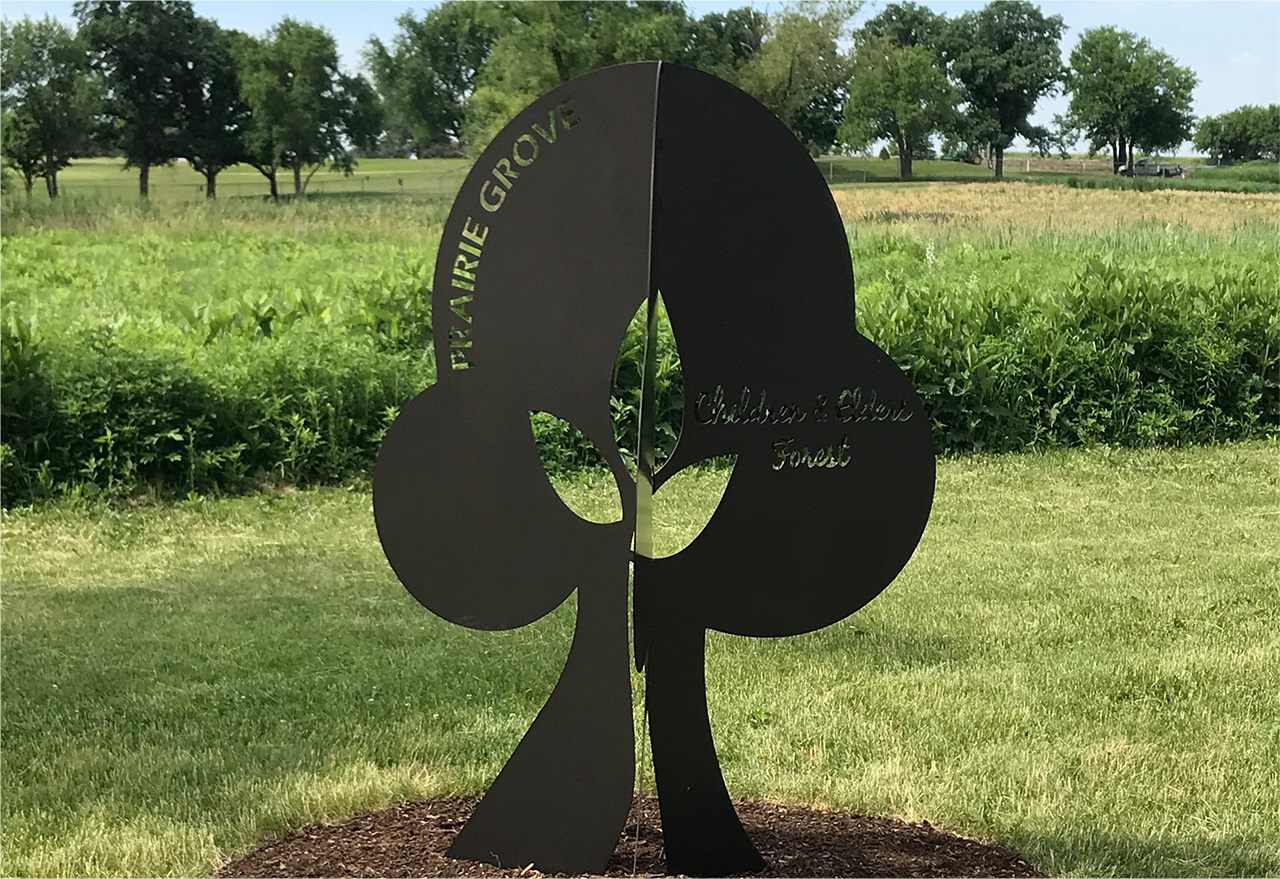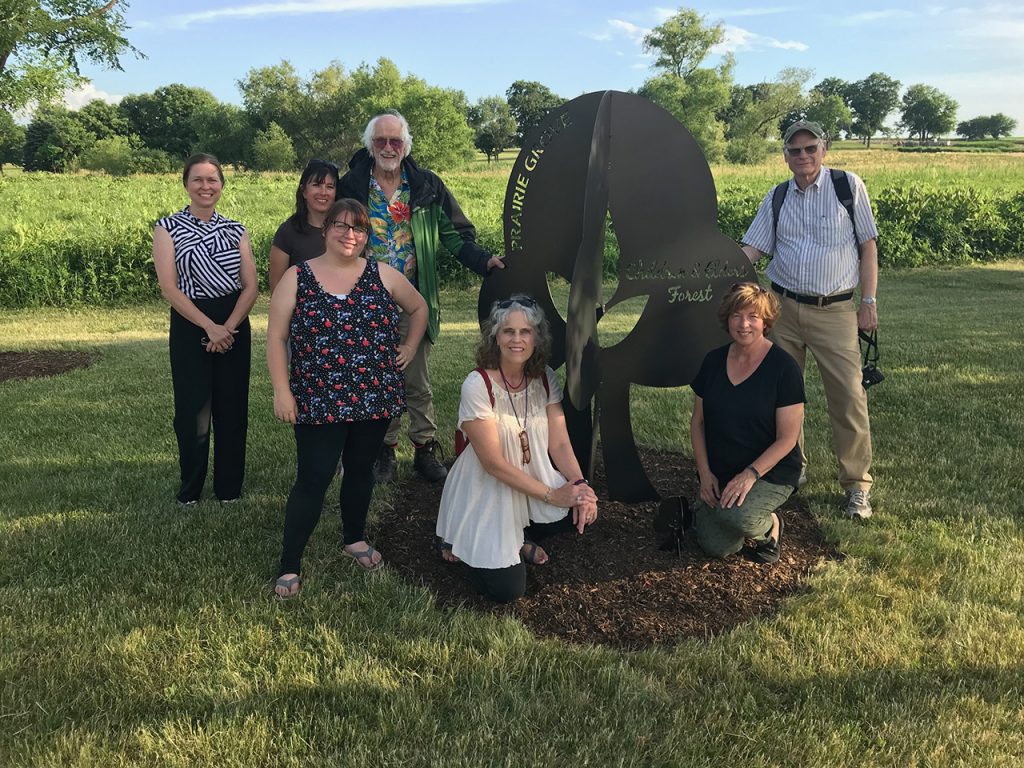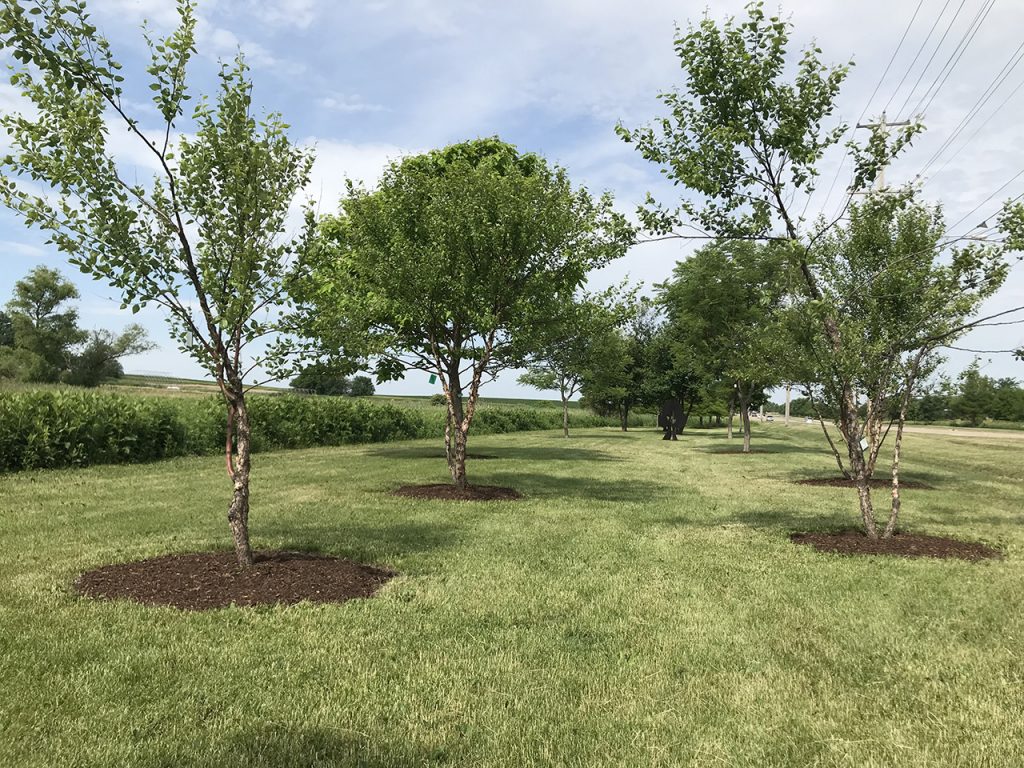“These trees shall be my books.”
– William Shakespeare, As You Like It
Trees mark the passage of time differently than the humans moving past them. In terms of the life of a tree, 10 years may constitute only a moment. For the humans who plant them, however, it is a time to celebrate.
This year marks the 10th anniversary of Prairie Grove, a collection of trees planted at Illinois State University’s Horticulture Center through the community organization Children and Elders Forest (CEF).
“Prairie Grove is a perfect example of a great partnership between the Center and the community,” said Jessica Chambers, director of the Horticulture Center. Looking up at the leaves of a newer Kentucky Coffeetree in the grove, she made a note to ask a student worker to give the tree another round of watering. “This one is looking a bit thirsty,” she said.
Nestled between a stretch of restored prairie and the traffic zipping by on Raab Road, Prairie Grove is one of the smaller of CEF’s nine local groves, which feature more than 600 trees planted by community members around Bloomington-Normal. First dedicated on a windy day in November of 2008, the grove is now home to 29 trees representing 11 species.
All of the trees in Prairie Grove are intentionally planted generously apart, and stretch into the air. The spacious design was part of stage one of the grove. Stage two would add a collection of “understory” trees and shrubs that will live under the canopy of the larger trees. “We would look to add trees like dogwoods that will not only add to the look of the grove, but can also dampen the noise from the road,” said Chambers, who added she hopes for a “relaxed, park-like” feel for the grove.
Each tree has its own story. Each story speaks of love, a special commitment, and a true regard for the environment. – Jessica Chambers
Chambers walked toward the middle of the grove, where a new sculpture bears the outline of a tree surrounding a budding leaf. Created by metal-works artist Barbara Foster of Rockford, the sculpture was dedicated this summer to commemorate the decade-long partnership of the Center and CEF. “We were looking for a creative way to celebrate our collaboration that honors so many,” said Chambers.
She reached to a slim, green tag on one of the trees and turned it over in her fingers. “Each tree has its own story,” she said. “Each story speaks of love, a special commitment, and a true regard for the environment.”
CEF trees can be sponsored in someone’s name, and many of the trees in Prairie Grove are dedicated to loved ones of those connected to Illinois State. “We have a tree dedicated to each of our grandchildren,” said Retired Associate Dean of the College of Applied Science and Technology Deb Gentry, who has sponsored six trees through CEF, some of which sit in Prairie Grove. “They love checking on their trees when they come to visit. They are growing up together.” She added she has one tree dedicated to her parents. “They are gone now, but it is a wonderful memorial to them.”

Members of the Children and Elders Forest spread mulch around newly planted trees in Prairie Grove in 2008.
Longtime CEF member Professor Emeritus Michael Sublett, who recently retired from Illinois State’s Department of Geography, Geology, and the Environment after 45 years of teaching, remembered planting day for the first trees in Prairie Grove in 2008. “It was a very wet year, but we had some people determined to get the trees sponsors chose into the ground,” he said.
Both Sublett and Gentry have served on the board of CEF, noting they were lured to the organization by its founders—and former fellow Illinois State faculty member—Joe Grabill. “Joe and I were co-directors of the Peace Studies Program,” said Gentry. “CEF aligns well with his philosophies of a just, peaceful, and balanced environment.”
Sublett and Gentry are also CEF “stewards,” or volunteers who walk the groves and check on the condition of the trees. “The Horticulture Center has a full-time staff of…well…me, and three wonderful part-time staff,” said Chambers. “It means so much to know the stewards are keeping an extra eye out for the trees.”
Prairie Grove may be in its youth (at least as far as the life of a tree goes), but Sublett said it is a foundation. “We do things right, and these trees will be here long after we are gone,” he said. “They will be here for people to enjoy, and that is a good thing.”



